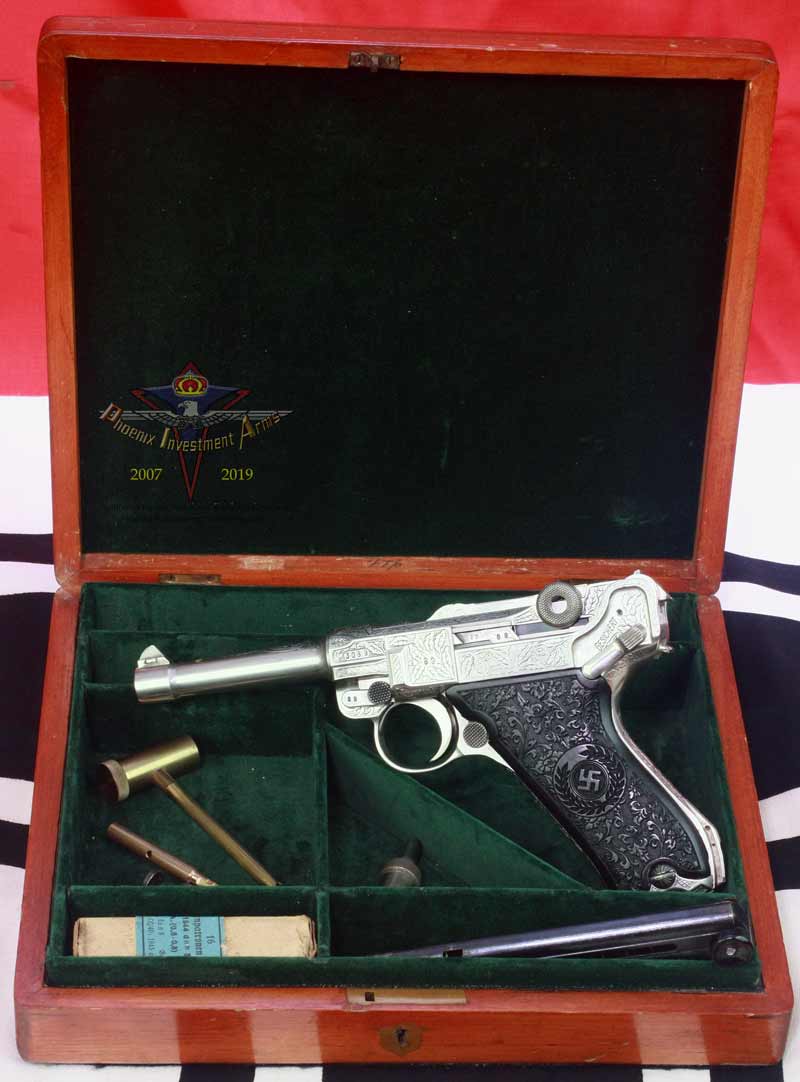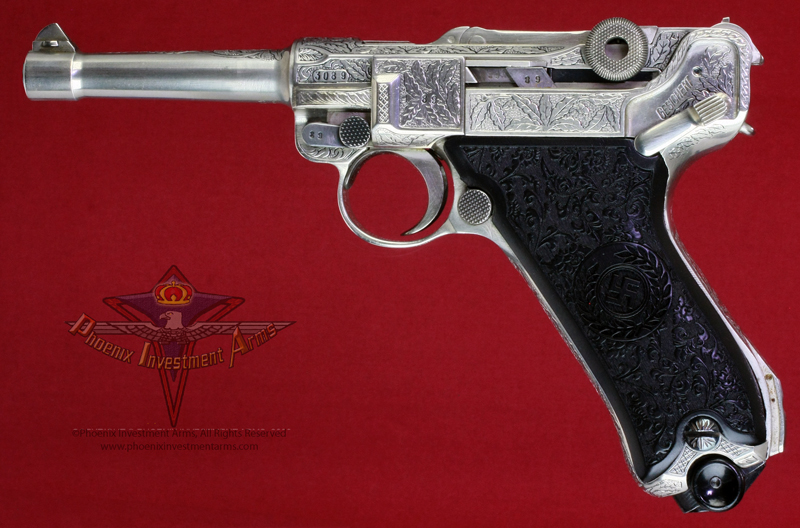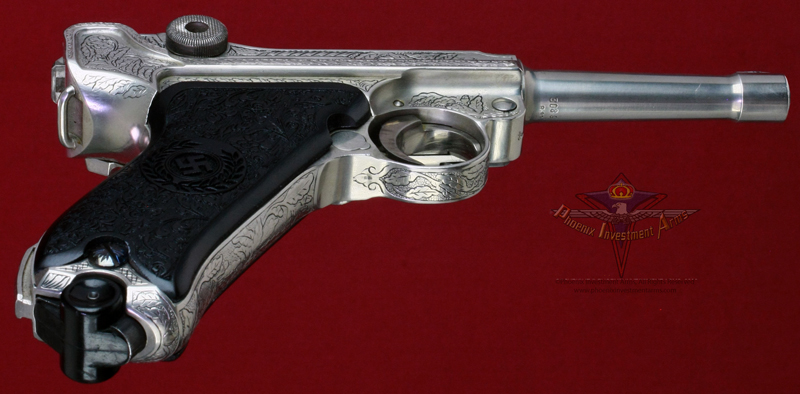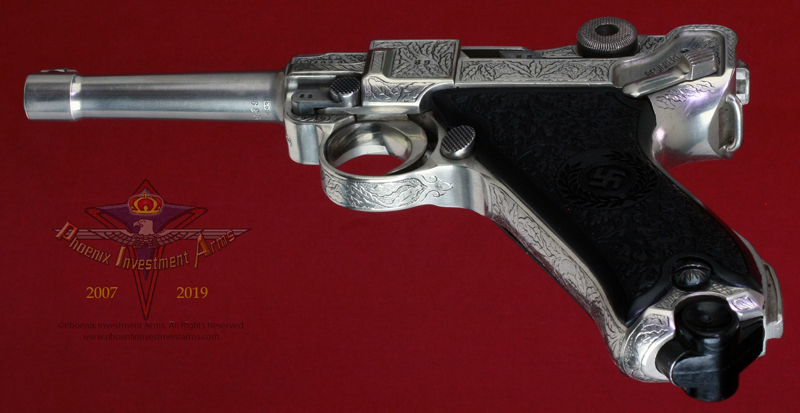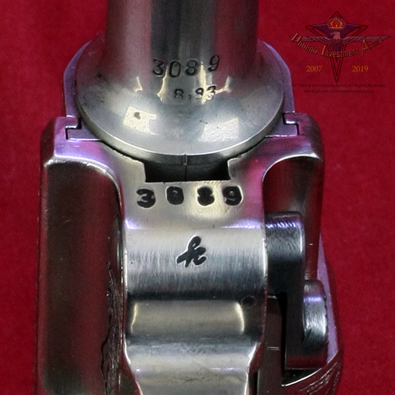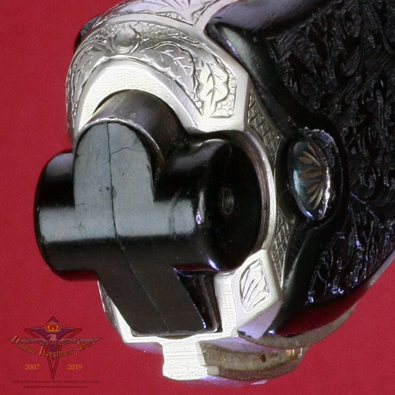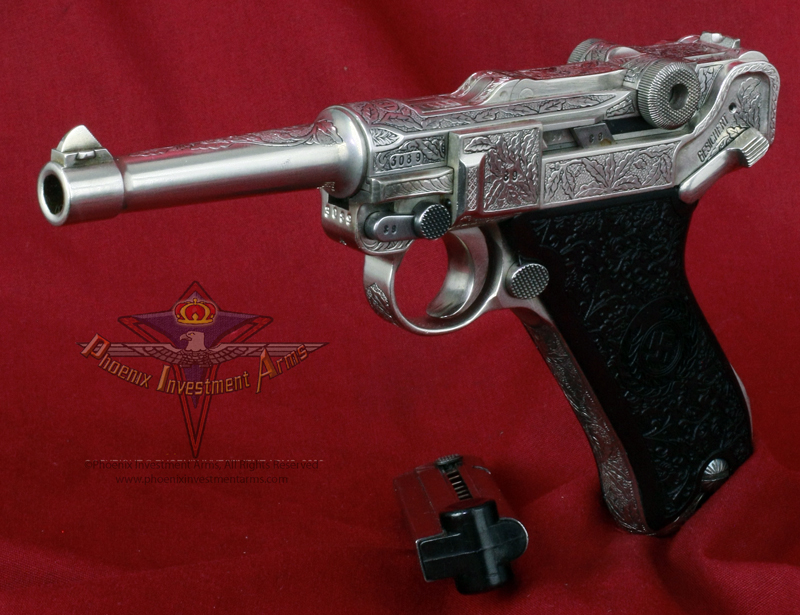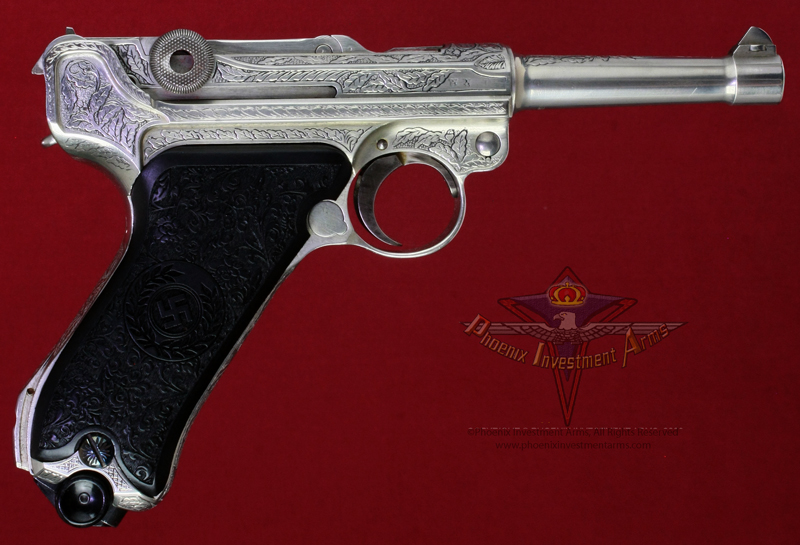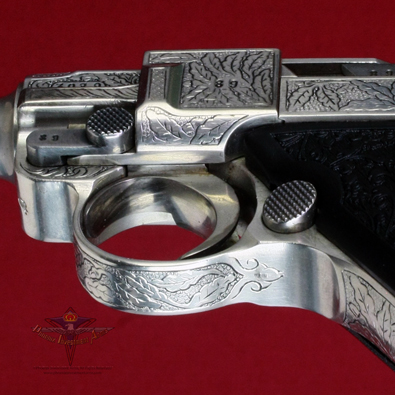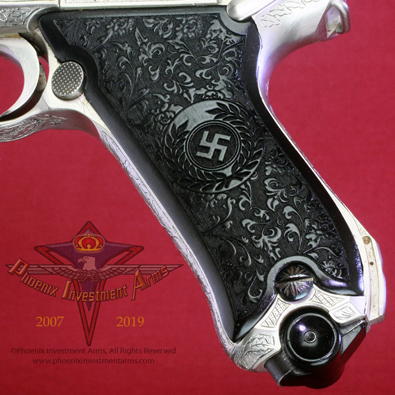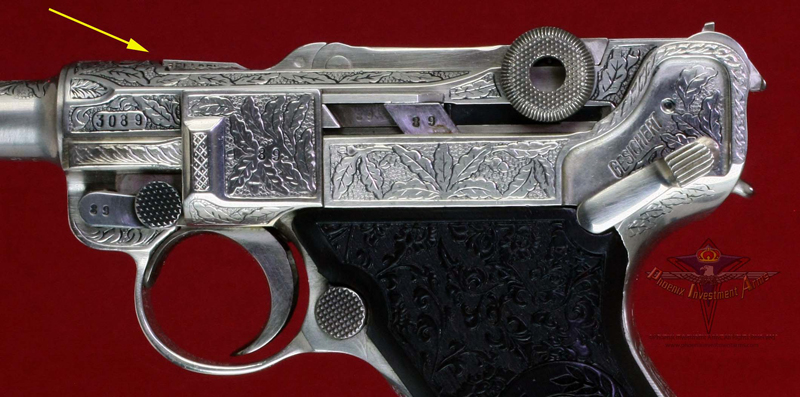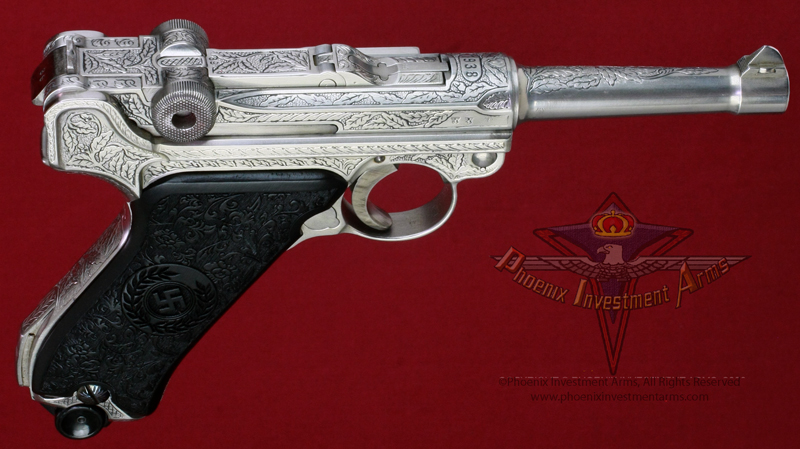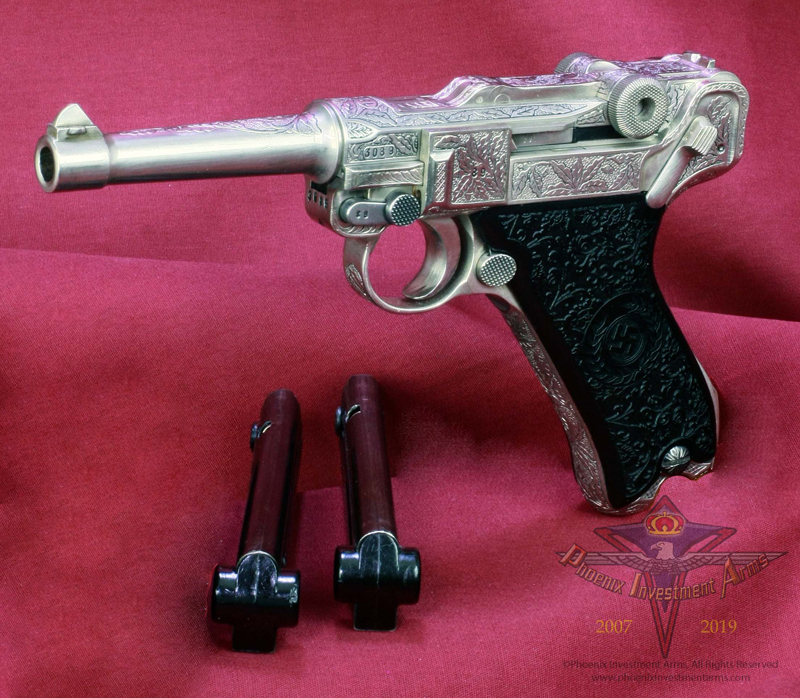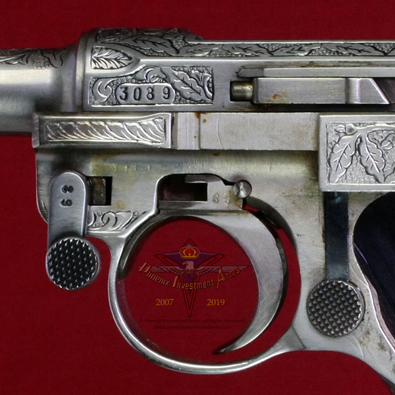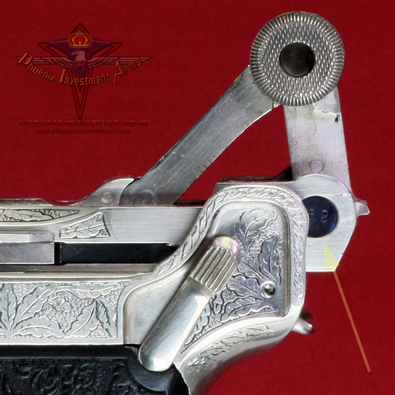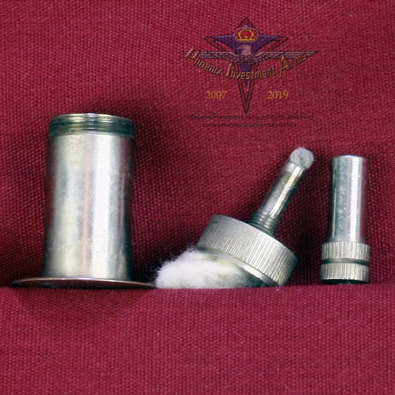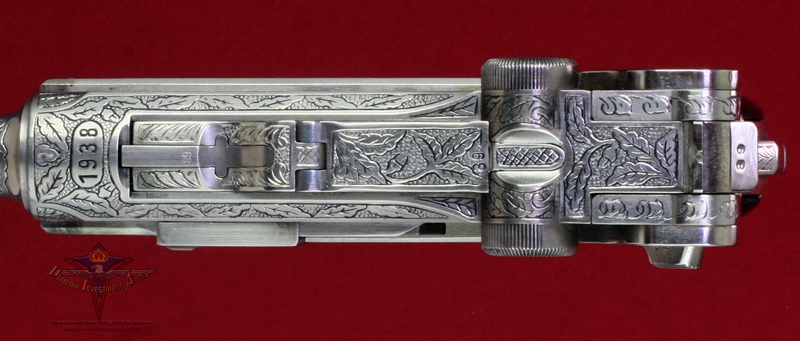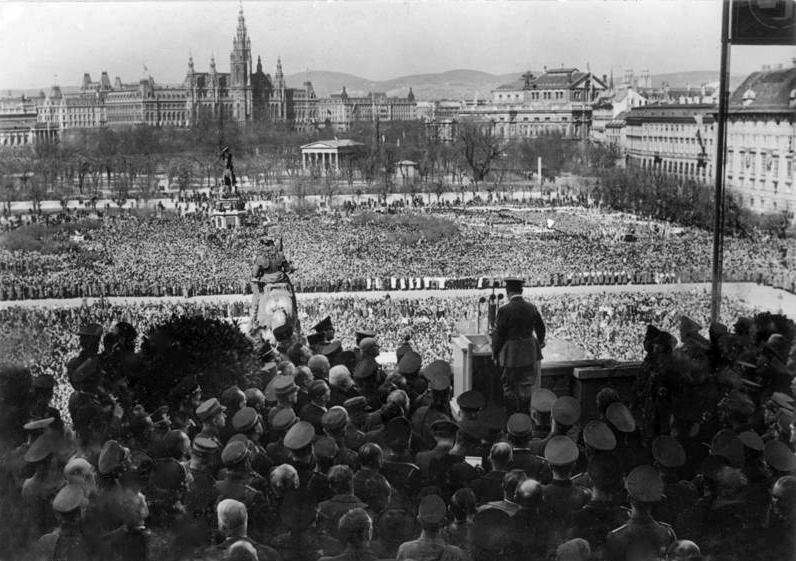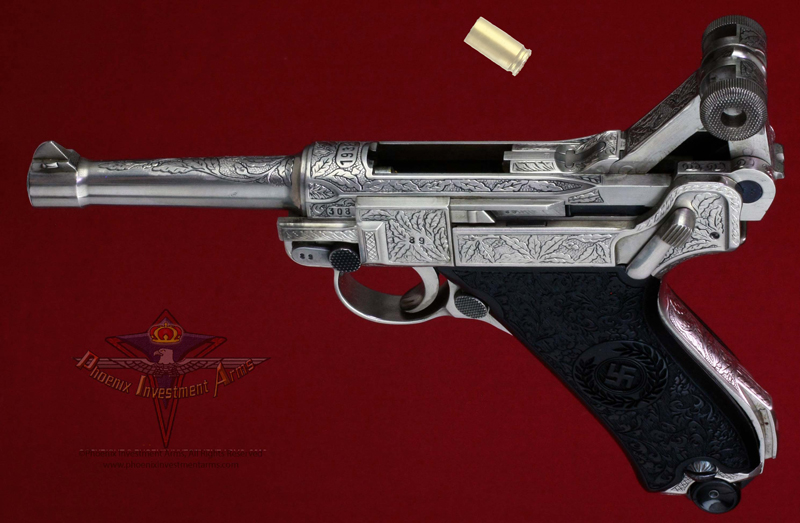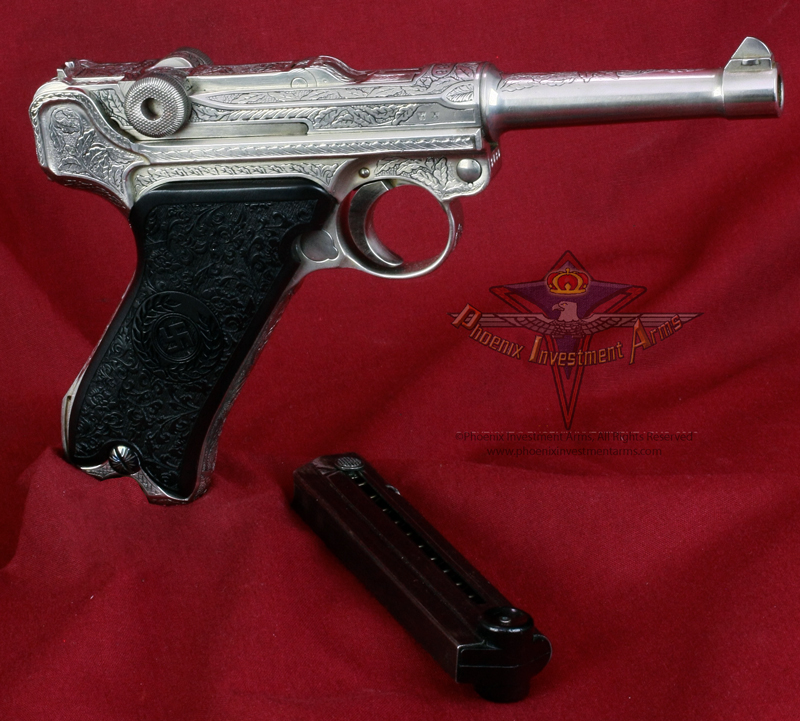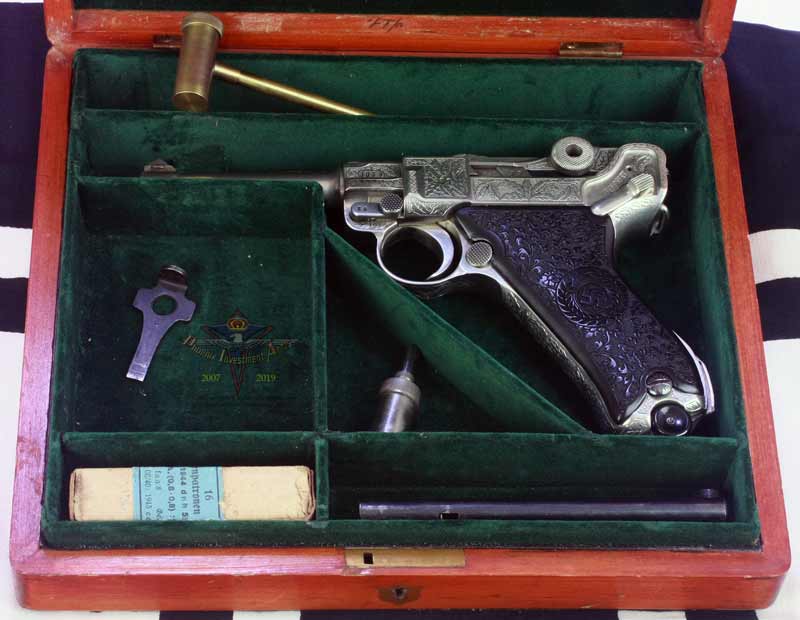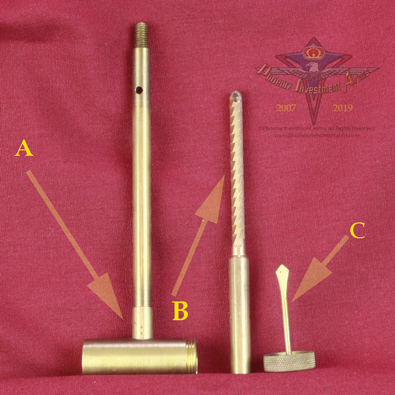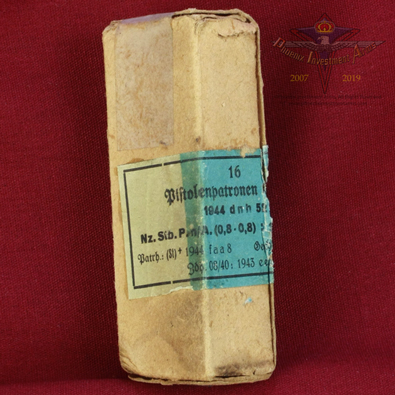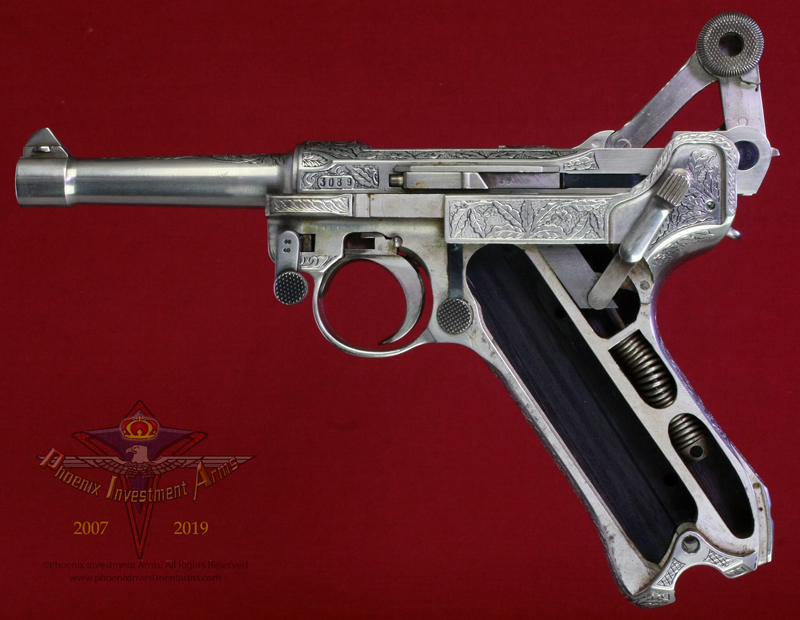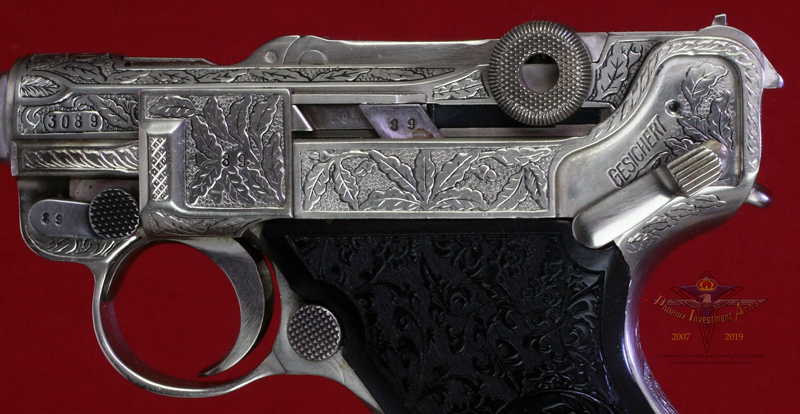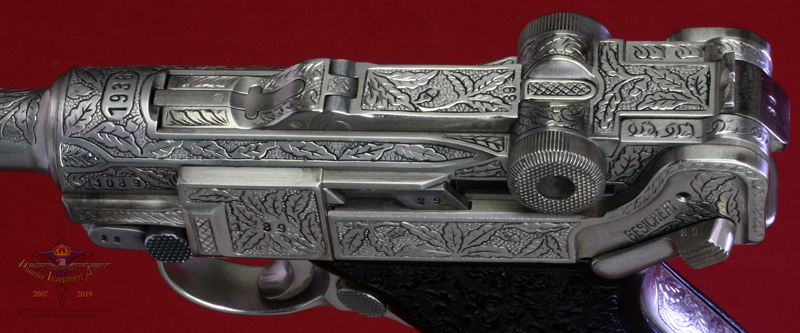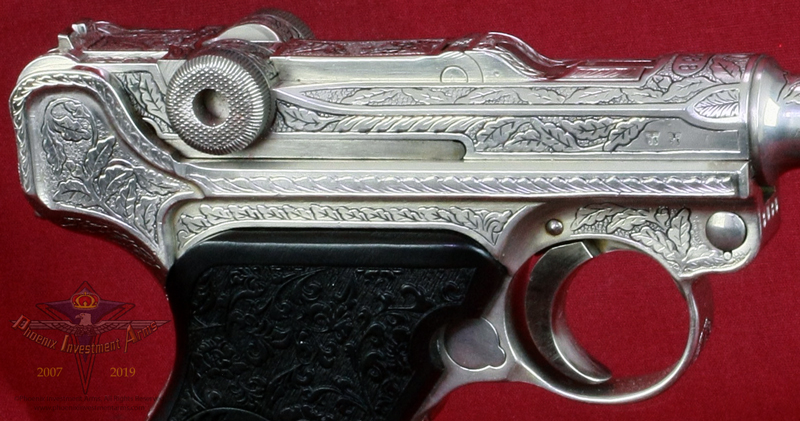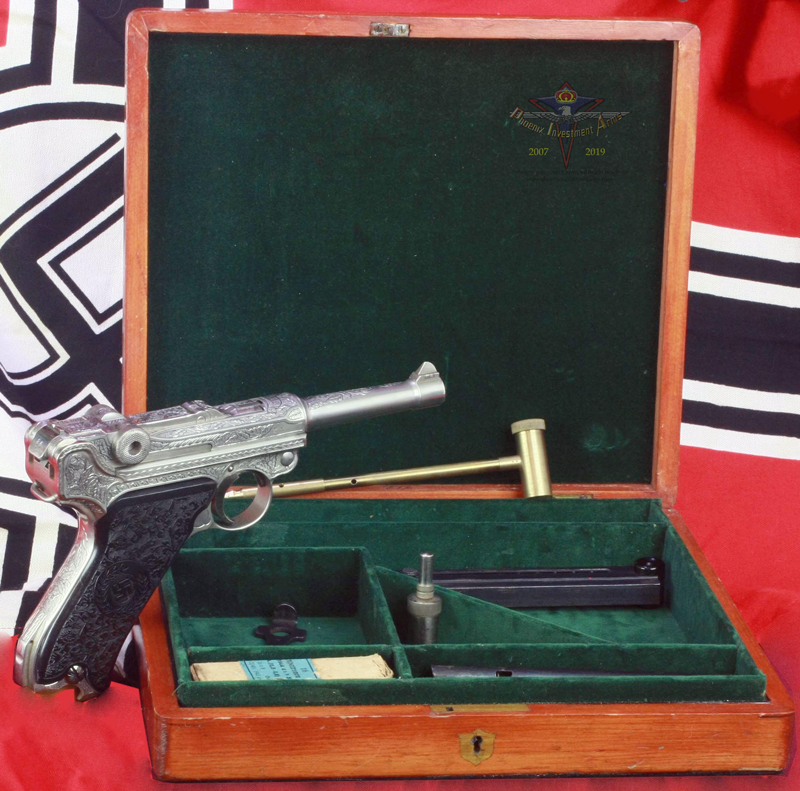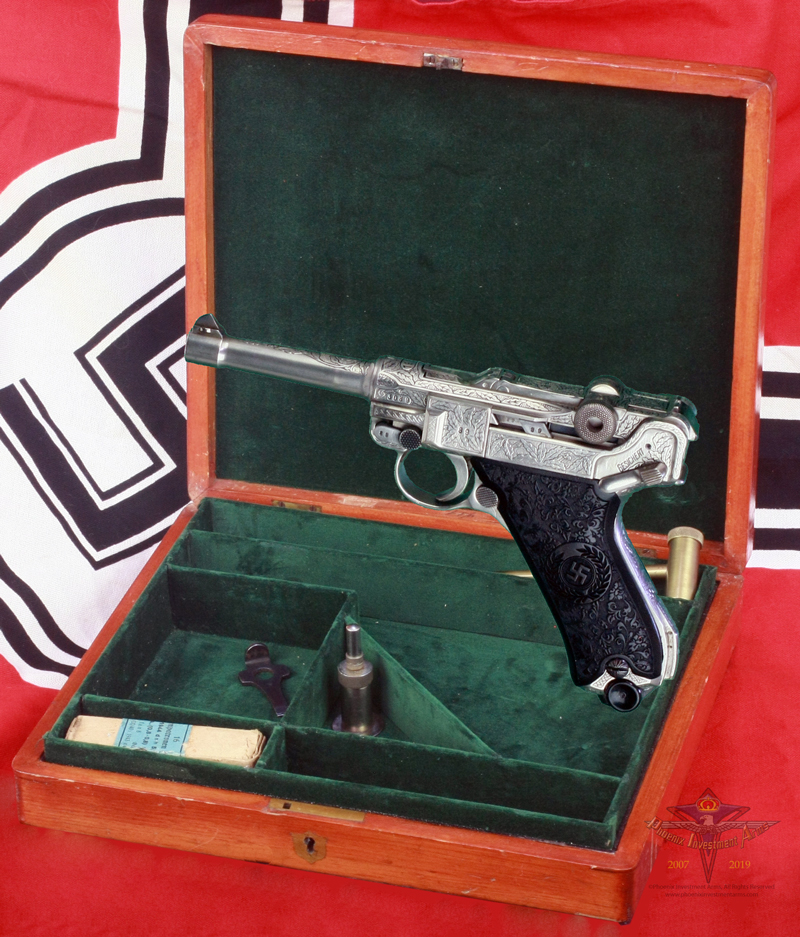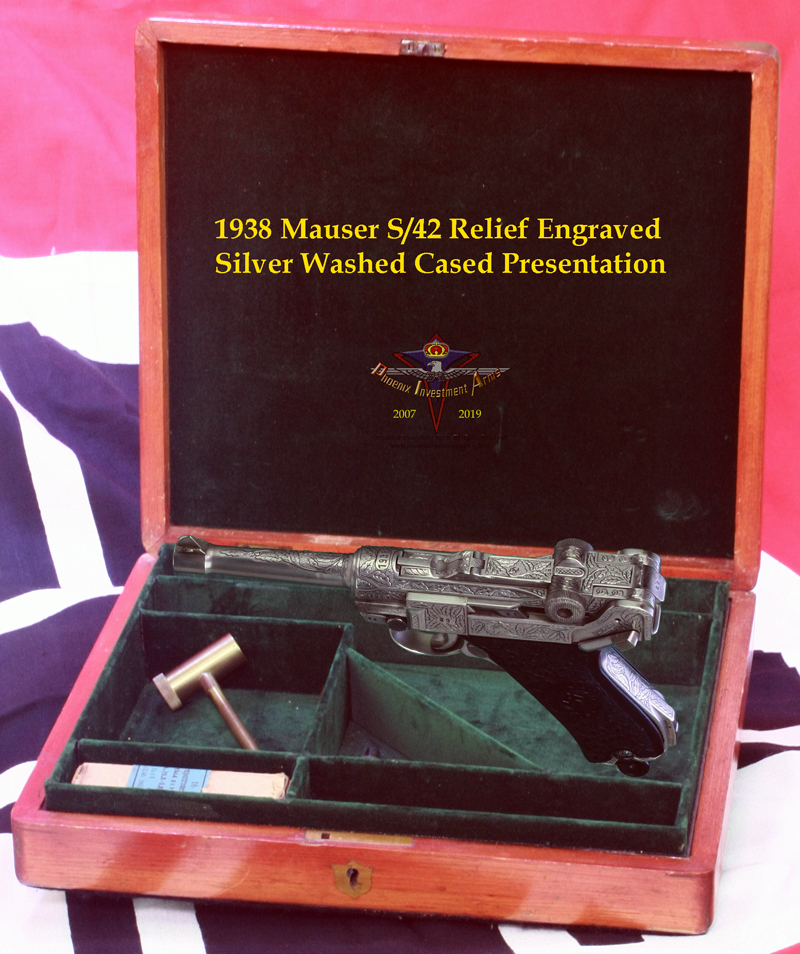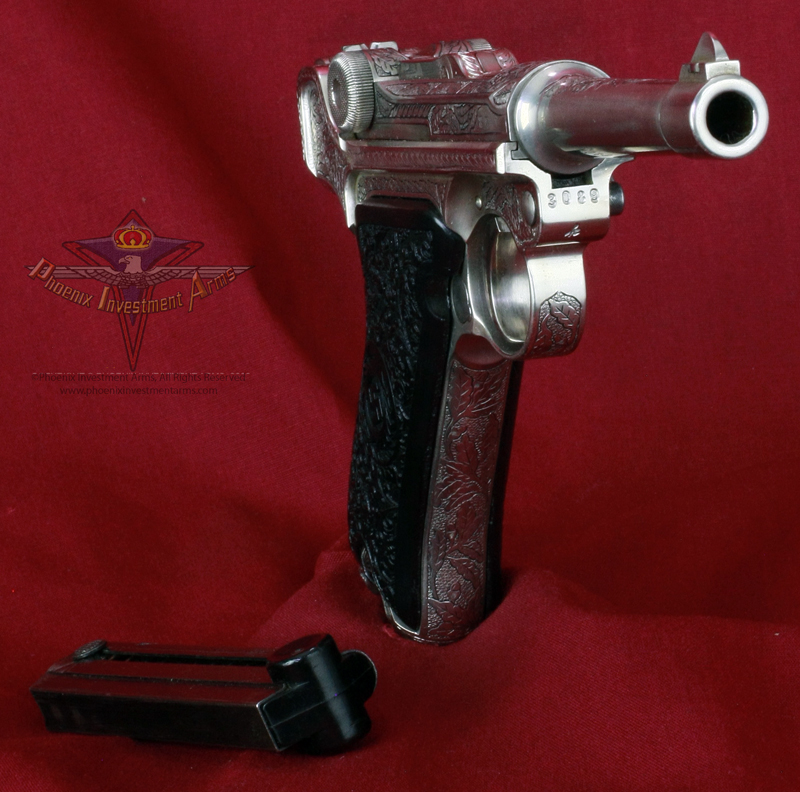PHOENIX INVESTMENT ARMS -
PREMIUM COLLECTOR LUGERS
Genuine German
Luger - Largest Variety of Lugers Offered
Home | Post WWI DWM | Erfurt Lugers | Mauser | Simson Suhl | Krieghoff | Vickers, Ltd | Swiss Bern | Other Guns
Bottom of Page
|
|
This is a 1938 Chamber dated Mauser S/42 Code
built for the German army and converted into this beautiful relief engraved presentation gun. This Parabellum is
9mm
with a 4" (100mm) barrel that is proofed and serial numbered to the gun. Serial number placement is in the
military "exposed" style. The thumb
safety is marked "Gesichert" and extractor "Geladen." This example has
all matching numbers.
This is an all matching Parabellum with two FXO magazines. (2121) |
|
|
|
NOTE: Photographs taken today with the high mega-pixel camera show more than we sometimes can see with the human eye. Magnified close-ups show us tool marks and natural surface conditions that one normally doesn't see in the ordinary handling of the weapon. Photographs are copyrighted, all rights reserved, any extraction, reproduction or display of gun pictures without the express consent of the Phoenix Investment Arms is strictly prohibited. Thank you for your cooperation. Please visit Legal (tabbed) for Conditions of Sale. |

